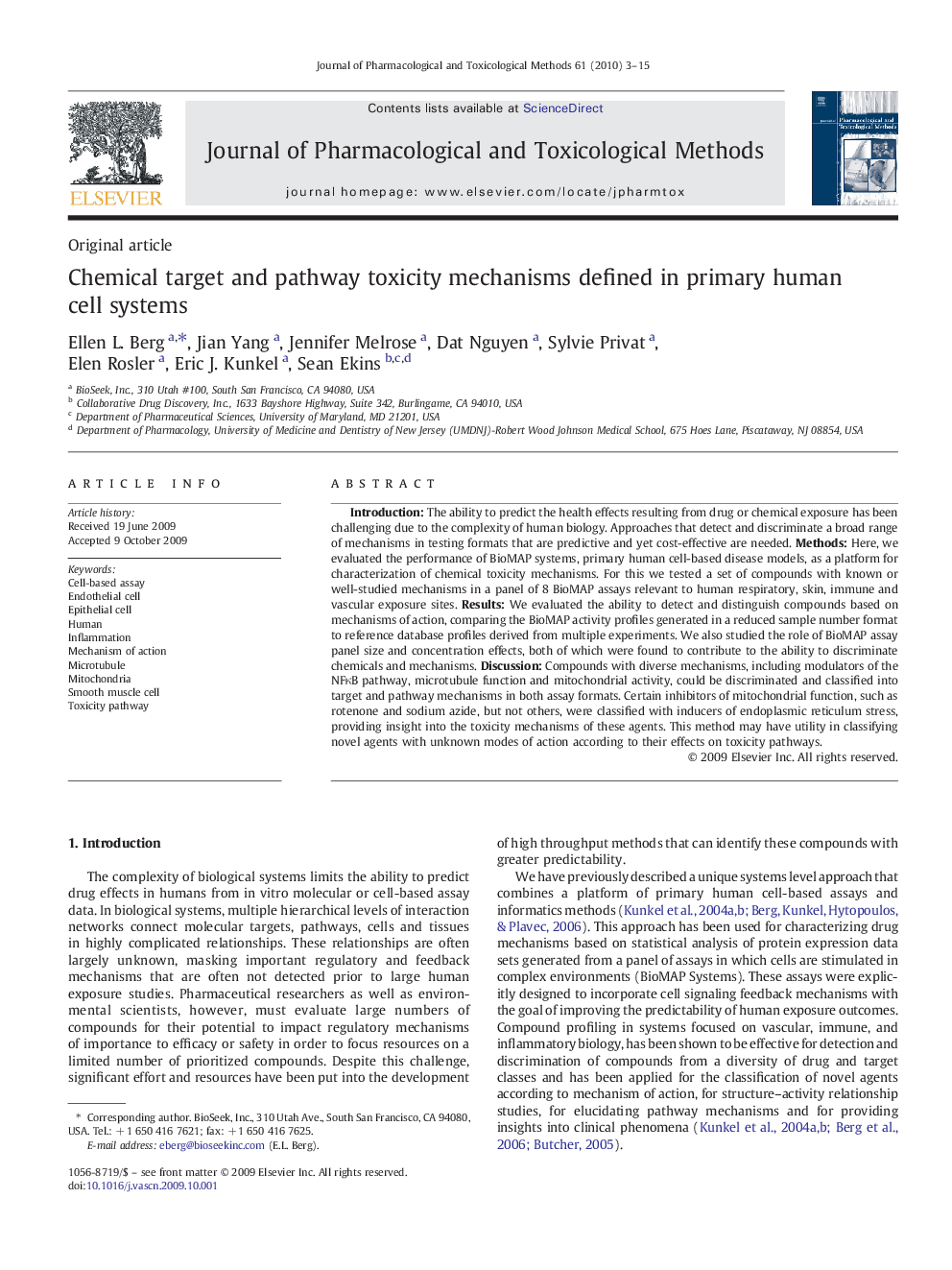| Article ID | Journal | Published Year | Pages | File Type |
|---|---|---|---|---|
| 2549405 | Journal of Pharmacological and Toxicological Methods | 2010 | 13 Pages |
IntroductionThe ability to predict the health effects resulting from drug or chemical exposure has been challenging due to the complexity of human biology. Approaches that detect and discriminate a broad range of mechanisms in testing formats that are predictive and yet cost-effective are needed.MethodsHere, we evaluated the performance of BioMAP systems, primary human cell-based disease models, as a platform for characterization of chemical toxicity mechanisms. For this we tested a set of compounds with known or well-studied mechanisms in a panel of 8 BioMAP assays relevant to human respiratory, skin, immune and vascular exposure sites.ResultsWe evaluated the ability to detect and distinguish compounds based on mechanisms of action, comparing the BioMAP activity profiles generated in a reduced sample number format to reference database profiles derived from multiple experiments. We also studied the role of BioMAP assay panel size and concentration effects, both of which were found to contribute to the ability to discriminate chemicals and mechanisms.DiscussionCompounds with diverse mechanisms, including modulators of the NFκB pathway, microtubule function and mitochondrial activity, could be discriminated and classified into target and pathway mechanisms in both assay formats. Certain inhibitors of mitochondrial function, such as rotenone and sodium azide, but not others, were classified with inducers of endoplasmic reticulum stress, providing insight into the toxicity mechanisms of these agents. This method may have utility in classifying novel agents with unknown modes of action according to their effects on toxicity pathways.
